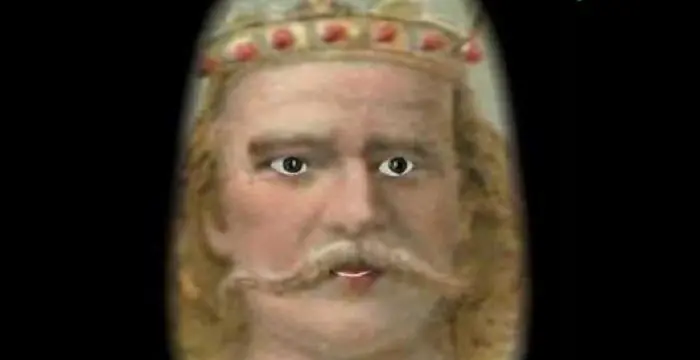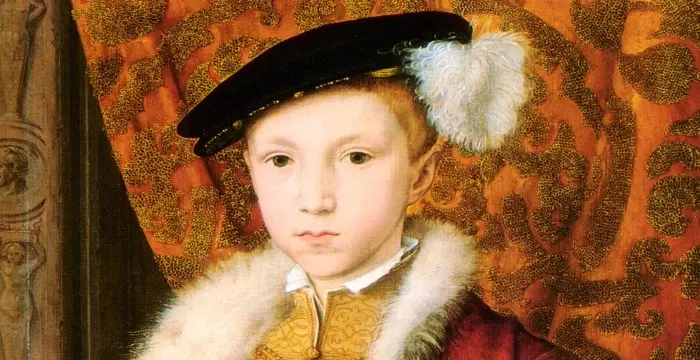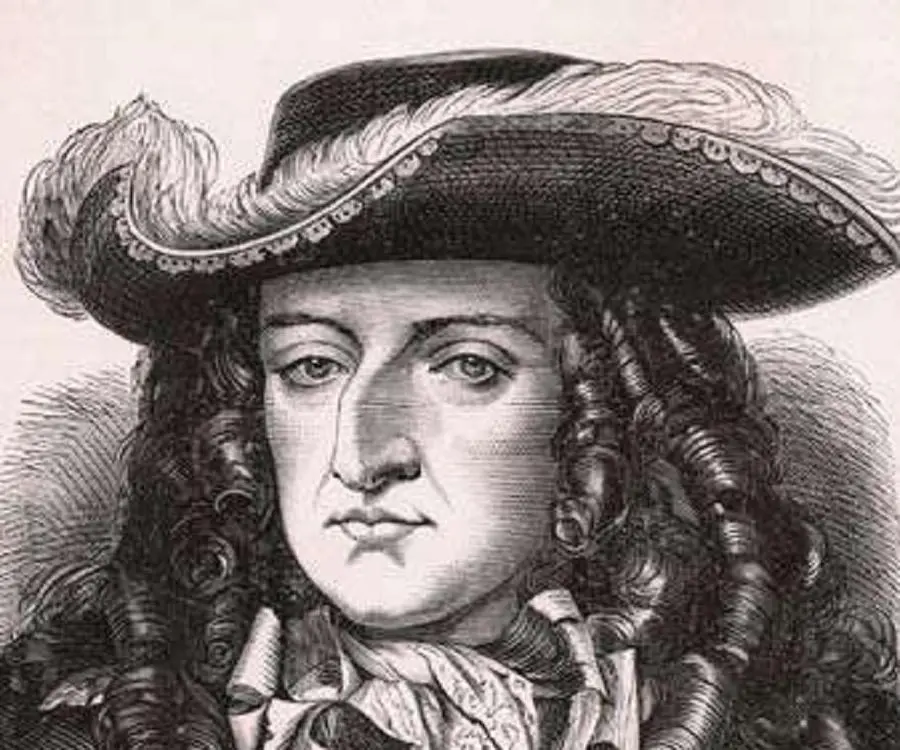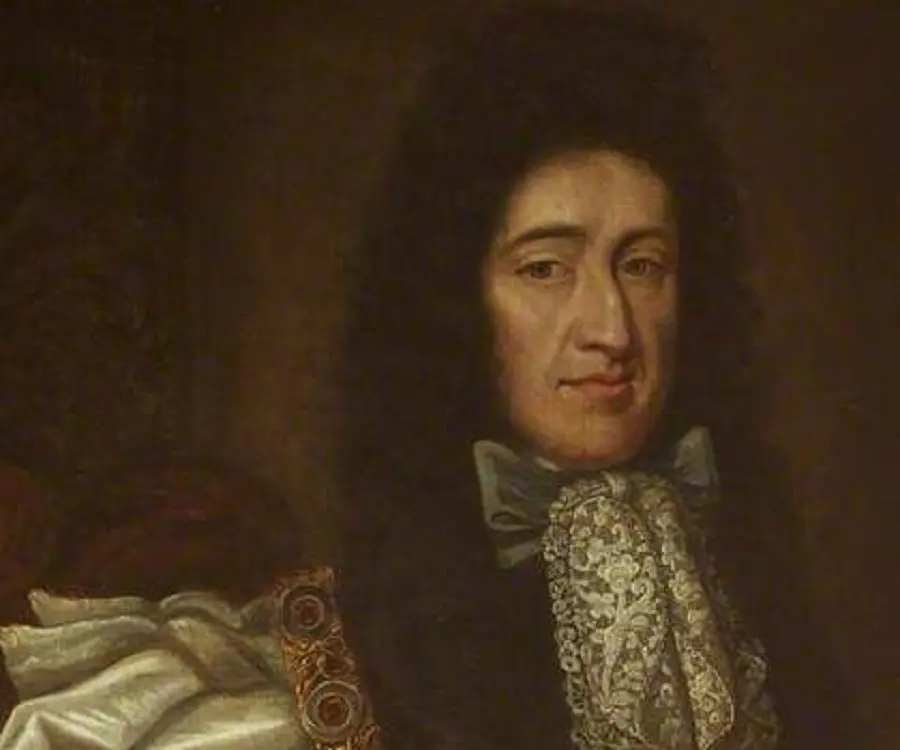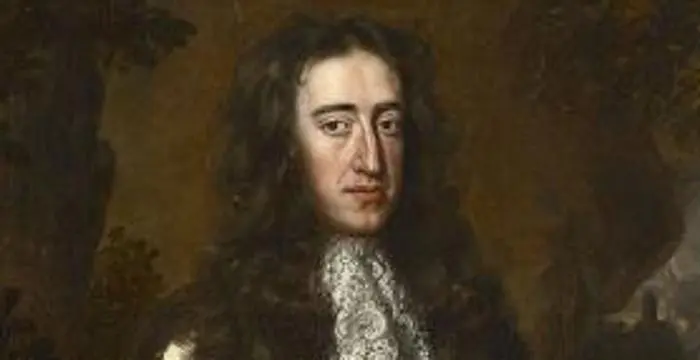
William III of England - Kings, Life Achievements and Childhood
William III of England's Personal Details
William III was the stadtholder of the main provinces of the Dutch Republic and the king of England, Ireland, and Scotland (King William II of Scotland)
| Information | Detail |
|---|---|
| Birthday | November 4, 1650 |
| Died on | March 8, 1702 |
| Nationality | Dutch |
| Famous | Historical Personalities, Emperors & Kings, Leaders, Emperors, King of England, Kings |
| Spouses | Mary II of England |
| Known as | William of Orange |
| Birth Place | Binnenhof, South Holland |
| Gender | Male |
| Father | William II, Prince of Orange |
| Mother | Mary, Princess Royal |
| Sun Sign | Scorpio |
| Born in | Binnenhof, South Holland |
| Famous as | King of England |
| Died at Age | 51 |
// Famous King of England
Harold Godwinson
Harold Godwinson was an Anglo Saxon King of England in the 11th Century. Check out this biography to know about his birthday, childhood, family life, achievements and fun facts about him.
Edward VI of England
Edward VI served as the King of England, from 1547 until his death in 1553. Check out this biography to learn in details about his life, his works as a king and timeline
William the Conqueror
William the Conqueror was the Duke of Normandy, who later became the King of England. This biography of William the Conqueror provides detailed information about his childhood, life, achievements, works & timeline
William III of England's photo
Who is William III of England?
William III was the stadtholder of the main provinces of the Dutch Republic and the king of England, Ireland, and Scotland (King William II of Scotland). He was also known as “William of Orange,” as he was the sovereign prince of Orange since his birth. He was educated in state matters and the state religion. Later, he attended the ‘University of Leiden.’ He was appointed as the stadtholder of the major provinces of the Dutch Republic. The same year, he fought a difficult war against the invading French forces. He married his first cousin, Mary, daughter of James (who later became King James II of England). As King James had converted to Catholicism, the English were fearful of a Catholic dynasty and invited William to invade England. The Catholic power was overthrown in the ‘Glorious Revolution,’ and William and his wife, Mary II, were jointly crowned as the new British rulers. Their sovereignty marked the beginning of an important transition from personal rule of the monarchs to the parliamentary rule system. William ruled with Mary II till her death. He then continued to rule alone till his death.
// Famous Emperors
Sundiata Keita
Sundiata Keita was the founder of the Mali Empire in West Africa. This biography profiles his childhood, early life, struggles, founding of empire, rule, administration, achievements and also gives some fun facts.
Ashoka
Ashoka was the third emperor of the Mauryan Dynasty and ruled almost the entire Indian subcontinent. This biography profiles his childhood, life, reign, achievements and timeline
Murad IV
Murad IV was one of the mighty Sultans in the history of the Ottoman Empire. This biography profiles his childhood, family, accession, rule, administration and timeline.
Childhood & Early Life
William III was born in November 1650, at Binnenhof, The Hague, in the Dutch Republic, which is now part of the Netherlands. His father, William II, the prince of Orange and the stadtholder of the main provinces of the Dutch Republic, died of small pox at the age of 24, only eight days before William’s birth. Thus, William III became the sovereign prince of Orange soon after his birth.
His mother, Mary, Princess Royal, was the eldest daughter of King Charles I of England (sister of King Charles II and King James II). William was the only child of his parents. His paternal grandmother insisted on baptizing him as “William” to help enhance his chances of becoming a stadtholder. His guardianship was shared among his mother, Mary; his paternal grandmother, Amalia of Solms-Braunfels; and Elector of Brandenburg, Frederick William, who was also the husband of William’s father’s eldest sister, Louise Henriette of Nassau. William had an impressive royal ancestry on both his paternal and his maternal sides.
Tutors were appointed for his studies, and he was also educated by Dutch governesses and Lady Anna Mackenzie, a Scottish noble-woman. He was groomed to carry the responsibilities of the ‘House of Orange-Nassau.’ William attended the ‘University of Leiden’ between 1659 and 1666. He, however, did not enroll as a student there. His mother died of small pox on December 23, 1660, while she was on a visit to London to meet her brother, King Charles II.
William was taught about the ‘Reformed Church’ and the theology of John Calvin. In her will, his mother had asked her brother, King Charles II, to take care of William. This created friction between the Dutch officials and the royalty of England. Johan de Witt, the grand pensionary of the Dutch court, took control of his education and taught him about state matters.
Adult Life
William joined the ‘Council of State of the Dutch Provinces’ in 1667. In 1672, he became the stadtholder of the ‘United Provinces,’ (or the main provinces of the Dutch Republic), a post that had become almost hereditary in his family. That year was considered as a “Rampjaar,” or “disaster year,” by the Dutch Republic, because that same year, King Louis XIV of France had invaded the ‘United Provinces,’ resulting in a war between the French and the Dutch. William headed the Dutch army and drove away the invading forces of Catholic King Louis XIV. The French army gradually withdrew after 1673.
On November 4, 1677, William married his first cousin, Mary, the eldest-surviving daughter of James, the duke of York, who later became King James II of England (and James VII of Scotland). It was a political marriage, as William wanted to form an Anglo–Dutch alliance against his nemesis, the French monarch Louis XIV. William wished that his uncle, King Charles II of England, should withdraw his support from the Catholic French king or change his pro-French policies.
Mary was 12 years younger, so the 27–year-old William married his 15-year-old reluctant bride at ‘St. James’s Palace,’ London. Mary became pregnant in 1678 but suffered a miscarriage. Reportedly, she miscarried two more times. She could not conceive again, and the couple remained childless. Other monarchs, such as his uncles Charles II and James II, had many mistresses, but William had only one mistress, Elizabeth Villiers.
King Charles II of England died in 1685. He had no legitimate children. James, Mary’s father and brother of Charles II, succeeded to the throne as King James II. He had converted to Roman Catholicism while marrying a princess from Italy, Maria Beatrice of Modena, also known as “Mary of Modena.” Since the majority of Britain was Protestant, they were concerned that James II would establish a Catholic dynasty.
In June 1688, when the Catholic wife of King James II gave birth to a son, James Francis Edward Stuart, the fears of the Protestants were confirmed. The leaders of the Protestants and the opponents of James II secretly contacted William and suggested that he should invade England.
William, along with his vast forces, landed at Brixham in Devon, on November 5, 1688. The Protestant Englishmen supported him, and some distinguished British noblemen defected to his side. James II sent his wife and young son to France. He was captured but was allowed to escape later. He went to King Louis XIV of France.
The parliament of England announced that by fleeing to France, James II had renounced the throne. Thus, the throne was offered to Mary, the elder daughter of James, and William, the son of the eldest daughter of Charles I. Mary and William were to be the joint rulers of England. Mary and William were declared as Queen Mary II and King William III of England and Ireland and King William II of Scotland, respectively. This overthrow of James II is known as the ‘Glorious Revolution.’
The new monarchs accepted the parliament’s ‘Declaration of Right,’ later called the ‘Bill of Rights.’ Thus, the monarchs did not have direct power, and this was the beginning of the transition toward the present-day system of parliamentary rule.
The coronation took place at ‘Westminster Abbey,’ on April 11, 1689. William and Mary swore to follow the statutes agreed upon in the parliament.
In an attempt to regain his throne, James landed in Ireland in March 1689, along with the French army provided by Louis XIV. William reached Ireland with his huge forces, and in July 1690, he defeated James at the Battle of the Boyne. James escaped to France and lived in exile for the rest of his life. The ‘Orange Order’ of Northern Ireland celebrates this triumph every year, on July 12.
The ‘Jacobites’ were political people who aimed to restore the Catholic king James II and his descendants to the throne of Britain. There were a series of ‘Jacobite’ risings, especially in Ireland and Scotland.
William formed the ‘Grand Alliance’ by bringing Britain into the ‘League of Augsburg,’ against France. He was often away on military campaigns against the risings in the states and against the Catholic ruler of France. His wife ruled in his absence. He founded the ‘Bank of England’ in 1694, partly to finance his wars with Louis XIV.
On December 28, 1694, Queen Mary died of small pox at ‘Kensington Palace,’ London. William was grief-stricken by her death. He ruled alone for the rest of his life.
In February 1702, while riding at ‘Hampton Court Palace,’ his horse, Sorrel, stumbled on a molehill. William fell and broke his collarbone. Although the fracture was set by a surgeon, it did not heal properly, and his health deteriorated. King William III of England died on March 8, 1702. While undressing him after his death, his servants found Queen Mary’s gold ring and a lock of her hair tied by a ribbon around his neck. He was buried at ‘Westminster Abbey’ on April 12, 1702.
The ‘Jacobites’ rejoiced his death. As William had no heir, the ‘House of Orange’ came to an end after his death. In Great Britain, Mary’s sister, Anne, succeeded to the throne as Queen Anne of England, Ireland, and Scotland.
// Famous Kings
Sundiata Keita
Sundiata Keita was the founder of the Mali Empire in West Africa. This biography profiles his childhood, early life, struggles, founding of empire, rule, administration, achievements and also gives some fun facts.
Ashoka
Ashoka was the third emperor of the Mauryan Dynasty and ruled almost the entire Indian subcontinent. This biography profiles his childhood, life, reign, achievements and timeline
Murad IV
Murad IV was one of the mighty Sultans in the history of the Ottoman Empire. This biography profiles his childhood, family, accession, rule, administration and timeline.
William III of England biography timelines
- // Nov 1650William III was born in November 1650, at Binnenhof, The Hague, in the Dutch Republic, which is now part of the Netherlands. His father, William II, the prince of Orange and the stadtholder of the main provinces of the Dutch Republic, died of small pox at the age of 24, only eight days before William’s birth. Thus, William III became the sovereign prince of Orange soon after his birth.
- // 1672William joined the ‘Council of State of the Dutch Provinces’ in 1667. In 1672, he became the stadtholder of the ‘United Provinces,’ (or the main provinces of the Dutch Republic), a post that had become almost hereditary in his family. That year was considered as a “Rampjaar,” or “disaster year,” by the Dutch Republic, because that same year, King Louis XIV of France had invaded the ‘United Provinces,’ resulting in a war between the French and the Dutch. William headed the Dutch army and drove away the invading forces of Catholic King Louis XIV. The French army gradually withdrew after 1673.
- // 1677On November 4, 1677, William married his first cousin, Mary, the eldest-surviving daughter of James, the duke of York, who later became King James II of England (and James VII of Scotland). It was a political marriage, as William wanted to form an Anglo–Dutch alliance against his nemesis, the French monarch Louis XIV. William wished that his uncle, King Charles II of England, should withdraw his support from the Catholic French king or change his pro-French policies.
- // 1685King Charles II of England died in 1685. He had no legitimate children. James, Mary’s father and brother of Charles II, succeeded to the throne as King James II. He had converted to Roman Catholicism while marrying a princess from Italy, Maria Beatrice of Modena, also known as “Mary of Modena.” Since the majority of Britain was Protestant, they were concerned that James II would establish a Catholic dynasty.
- // 1688In June 1688, when the Catholic wife of King James II gave birth to a son, James Francis Edward Stuart, the fears of the Protestants were confirmed. The leaders of the Protestants and the opponents of James II secretly contacted William and suggested that he should invade England.
- // 1689The coronation took place at ‘Westminster Abbey,’ on April 11, 1689. William and Mary swore to follow the statutes agreed upon in the parliament.
- // 1694William formed the ‘Grand Alliance’ by bringing Britain into the ‘League of Augsburg,’ against France. He was often away on military campaigns against the risings in the states and against the Catholic ruler of France. His wife ruled in his absence. He founded the ‘Bank of England’ in 1694, partly to finance his wars with Louis XIV.
- // 1694On December 28, 1694, Queen Mary died of small pox at ‘Kensington Palace,’ London. William was grief-stricken by her death. He ruled alone for the rest of his life.
- // 1702In February 1702, while riding at ‘Hampton Court Palace,’ his horse, Sorrel, stumbled on a molehill. William fell and broke his collarbone. Although the fracture was set by a surgeon, it did not heal properly, and his health deteriorated. King William III of England died on March 8, 1702. While undressing him after his death, his servants found Queen Mary’s gold ring and a lock of her hair tied by a ribbon around his neck. He was buried at ‘Westminster Abbey’ on April 12, 1702.
// Famous Historical Personalities
Sundiata Keita
Sundiata Keita was the founder of the Mali Empire in West Africa. This biography profiles his childhood, early life, struggles, founding of empire, rule, administration, achievements and also gives some fun facts.
Ashoka
Ashoka was the third emperor of the Mauryan Dynasty and ruled almost the entire Indian subcontinent. This biography profiles his childhood, life, reign, achievements and timeline
Jetsun Pema
Jetsun Pema is the Queen consort of Bhutan. Check out this biography to know about her childhood, family life, achievements and fun facts about her life.
Murad IV
Murad IV was one of the mighty Sultans in the history of the Ottoman Empire. This biography profiles his childhood, family, accession, rule, administration and timeline.
Xerxes I
Xerxes I (Xerxes the Great) was the fourth and the most famous king of the Archaemenid dynasty of Persia. This biography profiles his childhood, family, personal life, life history, achievements, campaigns, administration, death and other facts.
Sargon of Akkad
Sargon of Akkad, also called ‘Sargon the Great’, ‘Sarru-Kan’ and ‘Shar-Gani-Sharri’, was the founder and first king of the Akkadian Empire. This biography profiles his childhood, life, rule, administration, timeline, and gives some fun facts.
William III of England's FAQ
What is William III of England birthday?
William III of England was born at 1650-11-04
When was William III of England died?
William III of England was died at 1702-03-08
Which age was William III of England died?
William III of England was died at age 51
Where is William III of England's birth place?
William III of England was born in Binnenhof, South Holland
What is William III of England nationalities?
William III of England's nationalities is Dutch
Who is William III of England spouses?
William III of England's spouses is Mary II of England
Who is William III of England's father?
William III of England's father is William II, Prince of Orange
Who is William III of England's mother?
William III of England's mother is Mary, Princess Royal
What is William III of England's sun sign?
William III of England is Scorpio
How famous is William III of England?
William III of England is famouse as King of England
